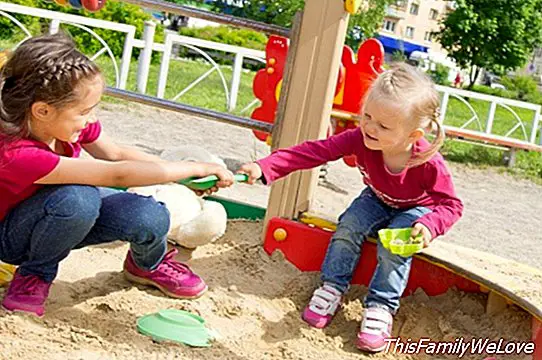Hit, bite, insult ... are there good or bad children?

It is normal to observe certain aggressive behaviors in preschool children. In this stage, the children are still learning to share and it is usual for the scene where one child removes one toy from the other and a reaction occurs. slap, kick or cry straight to the face.
It is also common to observe aggressive responses when children are tired or hungry In these cases, the behavior will cease and the child will begin to use the words to resolve those types of disputes and will discover that he / she obtains better results talking than pulling the hair of his / her similar.
However, when a child shows an increase in aggressive behavior it is logical that parents and teachers worry. Before hang tags like "it's bad", it is convenient to ask what is causing this behavior and what can be done to help.
Hit, bite, insult ... children from 3 to 5 years old
Children ages 3 to 5 are learning many new skills, such as using complex sentences or holding a pencil properly. In these situations, it is common for frustrations to develop in children. Similarly, in the first year of the child in a daycare or nursery school may be resentful or feel abandoned.
Many times, aggressiveness is a response to something that is happening at home, something that worries them or something they fear. Some children use verbal aggression, threatening and bothering other children. The matter is more serious when, due to these behaviors, they are labeled as bad and punished without further investigation. It is very common for children with aggressive behaviors to be labeled as aggressive, they often lose patience with them quickly and other children will soon also qualify them as intimidating and threatening, which will perpetuate the pattern of behavior.
An interesting study has shown that in children between 3 and 5 years old there is a strong correlation between aggressive behavior and low verbal ability or an easy inciting nature. This same study suggests that the treatment must be different depending on the cause that causes the problem of aggressiveness.
In this research, Dr. Gatzke-Kopp and her colleagues asked preschool teachers to rate their students' aggressive behaviors on a 6-point scale with items such as "starts many fights" and "is cruel and bullying others". With this information, the research team created two groups: one made up of children at high risk of aggressiveness and the other of children at low risk of aggressiveness. Both groups participated in a series of neurobiological measures that sought to understand how children live and handle their emotions.
Measures of cognitive and academic skills were taken using standardized tests, and the level of development in vocabulary, spatial reasoning and memory was identified. Skin conductivity tests and emotional management measures were also carried out.
The study concluded that children rated as high risk of aggressive behavior had low verbal ability or great facility to react negatively to anger, compared with children with low risk of aggressive behavior.
Possible causes of aggressive behavior
Children need verbal ability to understand their feelings and those of others, as well as to express what they want without resorting to aggressiveness. They also need an adequate cognitive and executive functioning to be able to manipulate information and reach the conclusion of carrying out behaviors other than aggression. With fewer verbal skills, children are expected to find aggression as a faster solution to their frustration.
Those children with greater physiological stimulation are more emotionally reactive and tend to have a greater presence of stressors in their lives. These children act with their first impulses although they know that it is not the right thing to do and that there are other more effective behaviors. The study suggests that for this type of children the threshold of frustration is significantly lower, so that something that could normally be considered as a minor annoyance perceive it as a big threat. They are children who normally do not show any kind of problem except when they lose control of their emotions, and therefore, their behavior.
Many factors can contribute to this type of low threshold of physiological reaction, such as: genetic or temperamental influences that in turn have been exposed to an aggressive environment, insecure or disorganized attachments, stress and stress, lack of problem-solving capacity , limited experience with models that provide examples of non-aggressive behavior.Sometimes ineffective parental education styles can be seen, such as authoritarians, controllers, parents who always give in to the child, parental rejection or parents who suffer from depression. In many cases it can be due to family stress, conflicts or disruptive behavior.
Maite Balda Aspiazu. Psychologist and Master in Cognitive Neurosciences




